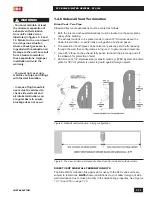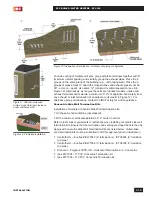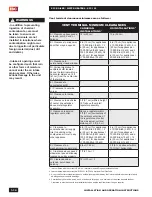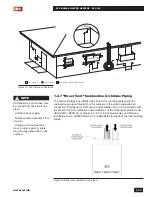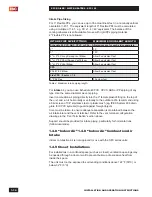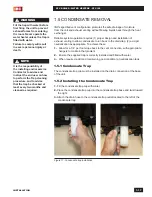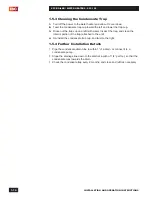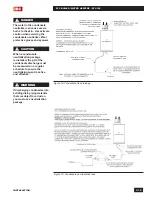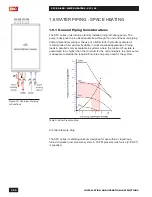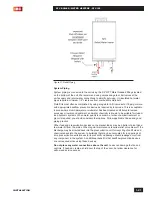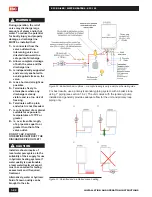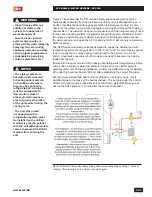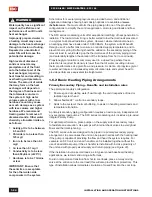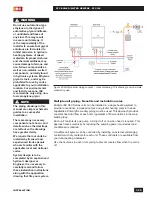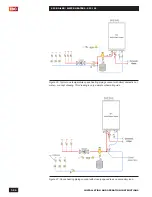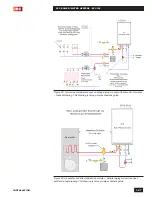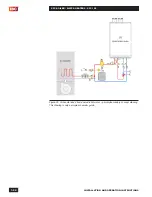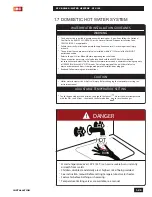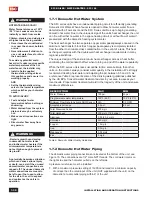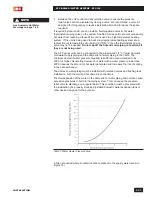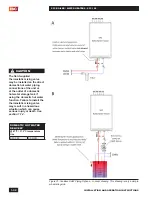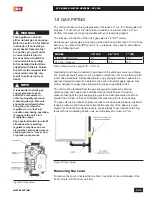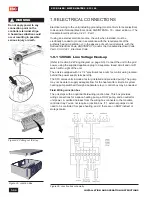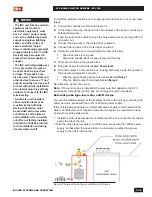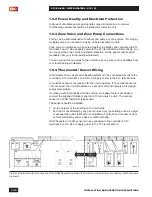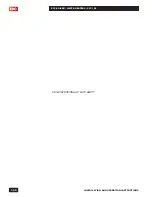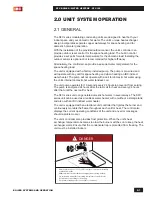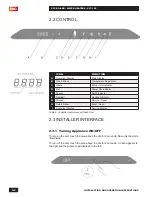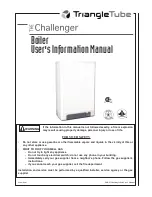
1-25
INSTALLATION
SFC BOILER / WATER HEATERS - SFC 199
Figure 25: Multiple boiler piping concept – concept drawing. This drawing is only a simple
schematic guide.
Multiple unit piping - Benefits and installation rules
Multiple IBC SFC Series units can be installed in a single heating system to
provide redundancy, increased output, and greater heating plant turn-down
capabilities. Primary/Secondary piping must be used. This approach provides
constant head and flow at each unit, regardless of flow variations in the main
building loop.
Each unit controls its own pump, turning it off or on when heat is required. This
approach saves electricity by reducing the pumping power required as load
conditions are reduced.
A multiple unit system can be controlled by installing an external unit staging
controller with dry contacts for each unit. These controllers are available from
your local heating wholesaler.
Use check valves in each unit’s piping to prevent reverse flow when the unit is
off.
WARNING
Do not use automotive-type
ethylene or other types of
automotive glycol antifreeze,
or undiluted antifreeze of
any kind. This may result
in severe unit damage. It
is the responsibility of the
Installer to ensure that glycol
solutions are formulated to
inhibit corrosion in hydronic
heating systems of mixed
materials. Improper mixtures
and chemical additives may
cause damage to ferrous and
non-ferrous components as
well as non-metallic, wetted
components, normally found
in hydronic systems. Ethylene
glycol is toxic, and may be
prohibited for use by codes
applicable to your installation
location. For environmental
and toxicity reasons, IBC
recommends only using non-
toxic propylene glycol.
NOTE
The piping drawings in this
manual are simple schematic
guides to a successful
installation.
There are many necessary
components not shown, and
details such as thermal traps
are left out so the drawings
have greater clarity.
We require that our units be
installed by licensed and
experienced trades people
who are familiar with the
applicable local and national
codes.
System design is to be
completed by an experienced
hydronic designer or
Engineer. It is necessary to
carefully read and follow
these installation instructions
along with the application
drawing that fits your system.

